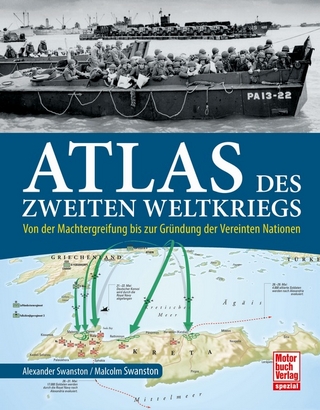
The Most Awful Responsibility
Truman and the Secret Struggle for Control of the Atomic Age
Seiten
2025
Harper (Verlag)
978-0-06-337943-5 (ISBN)
Harper (Verlag)
978-0-06-337943-5 (ISBN)
- Noch nicht erschienen (ca. September 2025)
- Versandkostenfrei innerhalb Deutschlands
- Auch auf Rechnung
- Verfügbarkeit in der Filiale vor Ort prüfen
- Artikel merken
A nuclear historian gives a new, surprising account of one of the most controversial actions in history—how the United States deployed the atomic bomb on Hiroshima and Nagasaki during World War II—and the fallout that continues to haunt us.
In the eight decades since the United States deployed the most destructive weapon ever used, conventional wisdom has held that American leaders were faced with a difficult choice: Invade Japan, which would have cost millions of Japanese and Allied lives in bloody combat, or use the fearsome atom bomb in the hopes of convincing the Japanese emperor to surrender. President Truman—in what many have come to regard as an immoral decision—ordered the military to drop the bomb.
Now, historian Alex Wellerstein offers a revisionist narrative of what happened in the spring of 1945, uncovering new research that points to a very different chain of events. Wellerstein reveals a much more complex situation in which American leaders, limited by time, knowledge, and authority, and under great secrecy, each jockeyed to influence if and how the bomb would be used. Refuting previous accounts, Wellerstein explains how there was no official decision to use the bomb, nor did President Truman likely know that Hiroshima or Nagasaki were heavily populated cities. Once the bombs were dropped, Truman began a years-long struggle for control of the awesome power of atomic weapons, the ramifications of which are still felt today.
The Atomic President documents the little-known truth of the circumstances leading to this momentous event, painting a more complete picture of the end of World War II and of Truman himself. It is essential reading for all who want to truly understand not only why the bomb was dropped on Japan, but also why it has not been used since.
In the eight decades since the United States deployed the most destructive weapon ever used, conventional wisdom has held that American leaders were faced with a difficult choice: Invade Japan, which would have cost millions of Japanese and Allied lives in bloody combat, or use the fearsome atom bomb in the hopes of convincing the Japanese emperor to surrender. President Truman—in what many have come to regard as an immoral decision—ordered the military to drop the bomb.
Now, historian Alex Wellerstein offers a revisionist narrative of what happened in the spring of 1945, uncovering new research that points to a very different chain of events. Wellerstein reveals a much more complex situation in which American leaders, limited by time, knowledge, and authority, and under great secrecy, each jockeyed to influence if and how the bomb would be used. Refuting previous accounts, Wellerstein explains how there was no official decision to use the bomb, nor did President Truman likely know that Hiroshima or Nagasaki were heavily populated cities. Once the bombs were dropped, Truman began a years-long struggle for control of the awesome power of atomic weapons, the ramifications of which are still felt today.
The Atomic President documents the little-known truth of the circumstances leading to this momentous event, painting a more complete picture of the end of World War II and of Truman himself. It is essential reading for all who want to truly understand not only why the bomb was dropped on Japan, but also why it has not been used since.
Alex Wellerstein is an Associate Professor in the Science and Technology Studies program at the Stevens Institute of Technology. He is the author of Restricted Data: The History of Nuclear Secrecy in the United States, and he has written for The New Yorker, Atlantic, Harper’s Magazine, and many other venues. He is perhaps best known as the creator of the NUKEMAP, the world’s most popular online nuclear weapons effects simulator. He is also the author of the Doomsday Machines blog, and he has taught at Harvard, MIT, and Georgetown University.
| Erscheint lt. Verlag | 25.9.2025 |
|---|---|
| Verlagsort | New York |
| Sprache | englisch |
| Maße | 152 x 229 mm |
| Gewicht | 454 g |
| Themenwelt | Literatur ► Biografien / Erfahrungsberichte |
| Sachbuch/Ratgeber ► Geschichte / Politik | |
| Natur / Technik ► Fahrzeuge / Flugzeuge / Schiffe ► Militärfahrzeuge / -flugzeuge / -schiffe | |
| Sozialwissenschaften ► Politik / Verwaltung | |
| ISBN-10 | 0-06-337943-0 / 0063379430 |
| ISBN-13 | 978-0-06-337943-5 / 9780063379435 |
| Zustand | Neuware |
| Haben Sie eine Frage zum Produkt? |
Mehr entdecken
aus dem Bereich
aus dem Bereich
von der Machtergreifung bis zur Gründung der Vereinten Nationen
Buch | Softcover (2023)
Motorbuch Verlag
24,90 €


